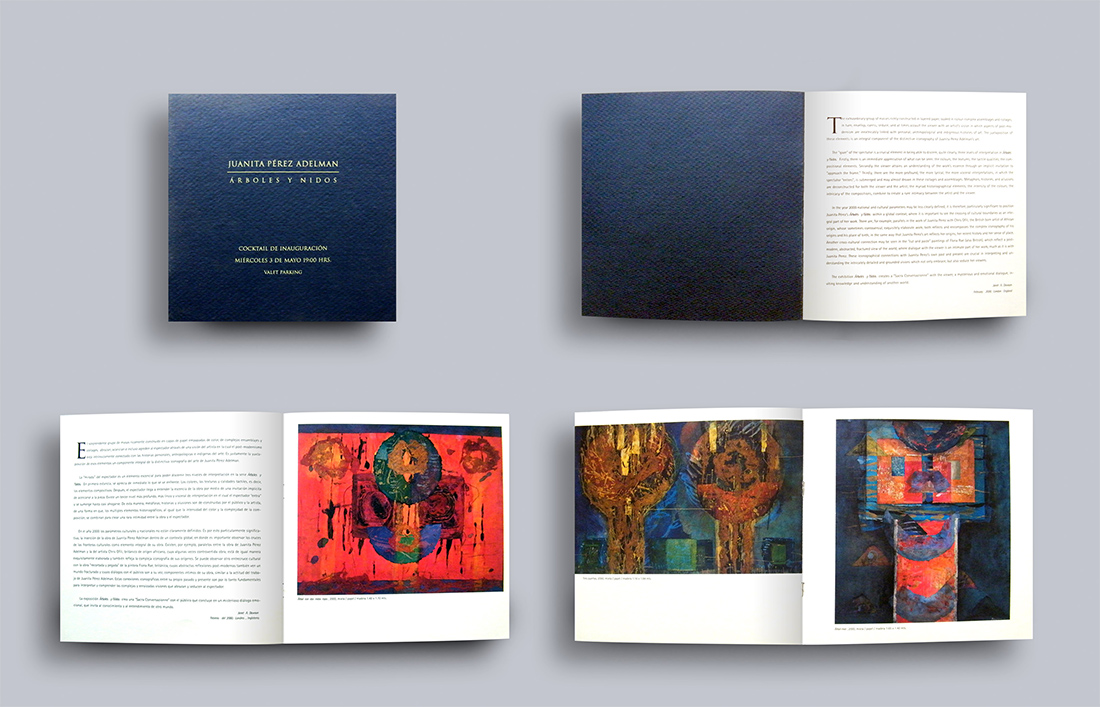- Hilos y Secuencias (Painted Strands)
- Artists of Casa Lamm in their workshops
- Vida
- Casa Lamm and its Artists
- Nombrar las cosas
- Internal Paradises
- Formations
- Desplazamientos
- Art In Embassies Program
- Árboles y Nidos (Trees and nests)
- Tejidos
- Arches-Bridges-Links
- Outside-Inside-Doors
- Ovens
- El ruido del tiempo
Árboles y Nidos (Trees and nests)
The extraordinary group of masses richly constructed in layered paper, soaked in color-complex assemblages and collages, in turn, envelop, caress, seduce, and at times assault the viewer with an artist’s vision in which aspects of post-modernism are inextricably linked with personal, anthropological and indigenous histories of art. The juxtaposition of these elements is an integral component of the distinctive iconography of Juanita Pérez Adelman’s art.
The “gaze” of the spectator is a crucial element in being able to discern, quite clearly, three levels of interpretation in Árboles y Nidos. Firstly, there is an immediate appreciation of what can be seen: the colors, the textures, the tactile qualities, the compositional elements. Secondly the viewer attains an understanding of the work’s essence through an implicit invitation to “approach the frame”. Thirdly there are the more profound, the more lyrical, the more visceral interpretations, in which the spectator “enters”, is submerged and may almost drown in these collages and assemblages. Metaphores, histories, and allusions are deconstructed for both the viewer and the artist; the myriad historiographical elements, the intensity of the colors, the intricacy of the compositions, combine to create a rare intimacy between the artist and the viewer.
The “gaze” of the spectator is a crucial element in being able to discern, quite clearly, three levels of interpretation in Árboles y Nidos. Firstly, there is an immediate appreciation of what can be seen: the colors, the textures, the tactile qualities, the compositional elements. Secondly the viewer attains an understanding of the work’s essence through an implicit invitation to “approach the frame”. Thirdly there are the more profound, the more lyrical, the more visceral interpretations, in which the spectator “enters”, is submerged and may almost drown in these collages and assemblages. Metaphores, histories, and allusions are deconstructed for both the viewer and the artist; the myriad historiographical elements, the intensity of the colors, the intricacy of the compositions, combine to create a rare intimacy between the artist and the viewer.
In the year 2000 national and cultural parameters may be less clearly defined; it is therefore, particularly significant to position Juanita Pérez’s Árboles y Nidos within a global context, where it is important to see the crossing of cultural boundaries as an integral part of her work. There are, for example, parallels in the work of Juanita Pérez with Chris Ofili, the British born artist of African origin, whose sometimes controversial, exquisitely elaborate work, both reflects and encompasses the complex iconography of his origins and his place of birth, in the same way as Juanita Pérez’s art reflects her origins, her recent history and her sense of place. Another cross-cultural connection may be seen in the “cut and paste” paintings of Fiona Rae (also British), which reflect a post-modern, abstracted, fractured view of the world, where dialog with the viewer is an intimate part of her work, much as it is with Juanita Pérez. These iconographical connections with Juanita Pérez’s own past and present are crucial in interpreting and understanding the intricately detailed and grounded visions which not only embrace, but also seduce her viewers.
The exhibition Árboles y Nidos creates a “Sacra Conversazione” with the viewer, a mysterious and emotional dialogue, inviting knowledge and understanding of another world.
The exhibition Árboles y Nidos creates a “Sacra Conversazione” with the viewer, a mysterious and emotional dialogue, inviting knowledge and understanding of another world.
Janet A. Dawson
February 2000
London, England

